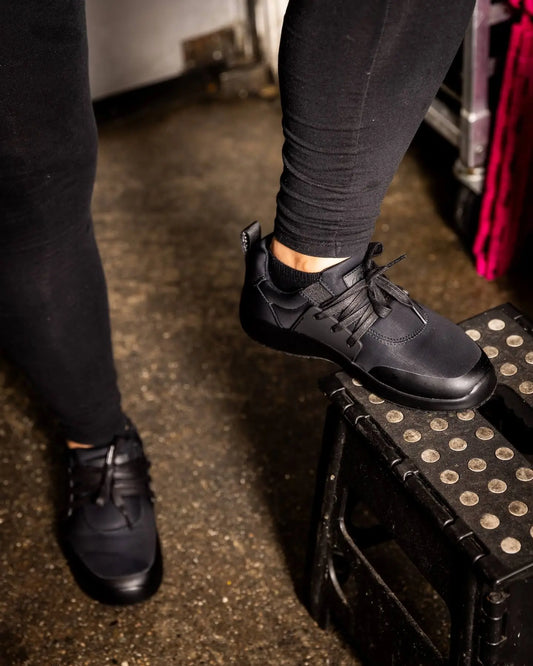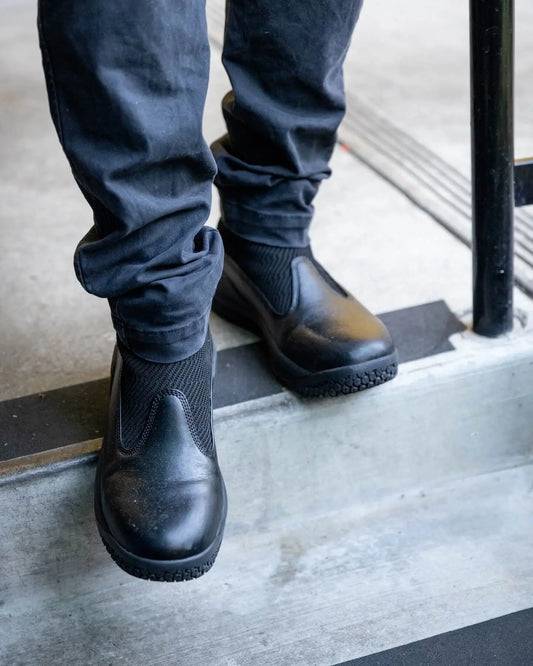Top Kitchen Hazards & How to Prevent Them
Alex Kinejara
Whether in your home or a restaurant, any commercial kitchen is full of the hustle and bustle, spills, hot oil and liquids, hot surfaces, hot food, and sharp objects. With so many hazards in the kitchen, it’s no surprise that kitchens are a recipe for accidents.
The key to preventing common kitchen accidents is knowing what the most common kitchen hazards are and taking steps to prevent problems before they happen.
Below, we’re breaking down the main danger zones in the kitchen and how to protect yourself and others from accidents and injuries.
Hazard #1: Manual Handling
Our first commercial kitchen hazard isn’t just a kitchen danger - manual handling is one of the most common causes of injury and lost time in every workplace.1 Manual handling refers to moving and lifting equipment and supplies by hand.
Kitchen staff are especially at risk for manual handling injuries because they often move quickly. Not taking time to lift heavy loads properly is one of the top reasons for back and joint injuries from manual handling. Back injuries are one of the most common chef injuries.
To steer yourself—and your staff—clear of any injuries of this nature, keep the following preventative tips in mind:
- Train staff on proper lifting and moving techniques.
- Always test the load for stability and weight when lifting heavy items, and repack to lighten the load if possible.
- Keep the load as close to the body as possible.
- Use your legs to push up and lift the load, not the upper body or back.
- Wear appropriate shoes to provide joint support as well as toe protection.
- Use dollies and other appropriate equipment for moving heavy objects like kegs and crates.2
- These exercises for chefs can help prevent repetitive motion and lifting injuries
Hazard #2: Slips, Trips, and Falls
Slips, trips, and falls are always a top cause of injury in any workplace.3
Kitchens are no exception. In fact, falls are especially common kitchen hazards due to the high likelihood of wet and greasy spills, crowded conditions, and people in a hurry.
Luckily, most slips and falls can be prevented with just a few kitchen hazard precautions:
- Clean up promptly – Whenever possible, clean up spills as soon as they occur. This also helps prevent other food safety issues. When you can’t get to a spill immediately, or if you’ve mopped an area and it’s still drying, mark it with a “wet floor” sign.
- Use non-slip kitchen floor mats – A properly equipped kitchen should have mats designed for use in wet spaces. These should include drainage holes that allow wet spills to pass through while keeping the surface dry and grippy.
- Remember your callouts – In the restaurant industry, callouts are a basic part of kitchen etiquette to warn coworkers when you’re on the move. The four most basic callouts to remember are:
- “Behind” – Meaning, you’re passing by in close quarters
- “Corner” – Meaning, you’re coming around a corner
- “Hot” – Meaning, you’re carrying a hot pan or dish
- “Sharp” – Meaning, you’re passing with a knife in hand
- Wear appropriate footwear – One of the most important ways to prevent slips and falls is to use appropriate footwear. Safe kitchen shoes are water-resistant, slip-resistant, and built with durable, robust materials.
Hazard #4: Improper Storage
As tools, ingredients, and equipment accumulate, it’s easy to get sloppy about putting things away properly. However, improperly stored items are one of the top hazards in the kitchen.
It’s not just the risk of tripping over boxes in a crowded walkway. Crowded counters can leave flammable items near burners, creating a fire safety hazard. Burns can result from hot pans being placed too close to work areas.
Luckily, keeping your kitchen safe and free from clutter is as easy as:
- Keeping walkways clear – From boxes of vegetables and trash cans to buckets and crates, kitchens are crowded spaces with a lot of equipment being moved around. Nevertheless, it’s important to take the time to stack items out of main traffic areas. Anything that doesn’t absolutely have to be kept on the kitchen floor should be properly stored elsewhere.
- Ensuring sufficient storage space – You can’t keep the kitchen tidy if there isn’t enough space to put tools and ingredients away. Ensure every item has a place to store, and train staff on where everything is kept.
Hazard #5: Fire and Electrical Hazards
Fire hazards in kitchens are numerous, from hot burners, open flames and overloaded electrical circuits. One of the main causes of kitchen fires are grease fires that quickly get out of control. Cooking appliances can also overheat, becoming a fire hazard. To combat these risks, kitchen staff should always wear appropriate clothing, avoid loose sleeves, and keep long hair tied back.3 Electrical and fire safety should always be one of the priorities in a commercial kitchen.
You can also keep fire and electrical hazards at bay by:
For Kitchen Safety, Think Snibbs
Any experienced chef knows that cooking requires you to think on your feet. But what you wear on your feet is just as important for kitchen safety. Sturdy and supportive chef shoes are one of the best ways to prevent avoidable kitchen accidents. When your footwear supports your workflow, you’ll feel more energetic and better prepared to handle any potential food safety pitfalls.
That’s why safety in the kitchen starts with the proper pair of shoes. Simply choosing footwear for comfort isn’t enough. When it comes to work shoes, slip-resistant and water-resistant designs are a must. Here at Snibbs, that’s exactly what we bring to the table.
You only choose the best cookware for your kitchen—shouldn’t your cook wear be held to the same standard? Shop Snibbs today and take your kitchen-safe footgear to the next level.
Sources:
- Occupational Health and Safety. Preventing manual handling injuries. https://ohsonline.com/Articles/2015/09/01/Preventing-Manual-Handling-Injuries.aspx?Page=2
- Center for Disease Control. Improving manual handling in your workplace. https://www.cdc.gov/niosh/docs/2007-131/pdfs/2007-131.pdf
- Workplace Safety and Health Council. Preventing common kitchen hazards. https://www.tal.sg/wshc/topics/kitchen-safety/preventing-common-kitchen-hazards














